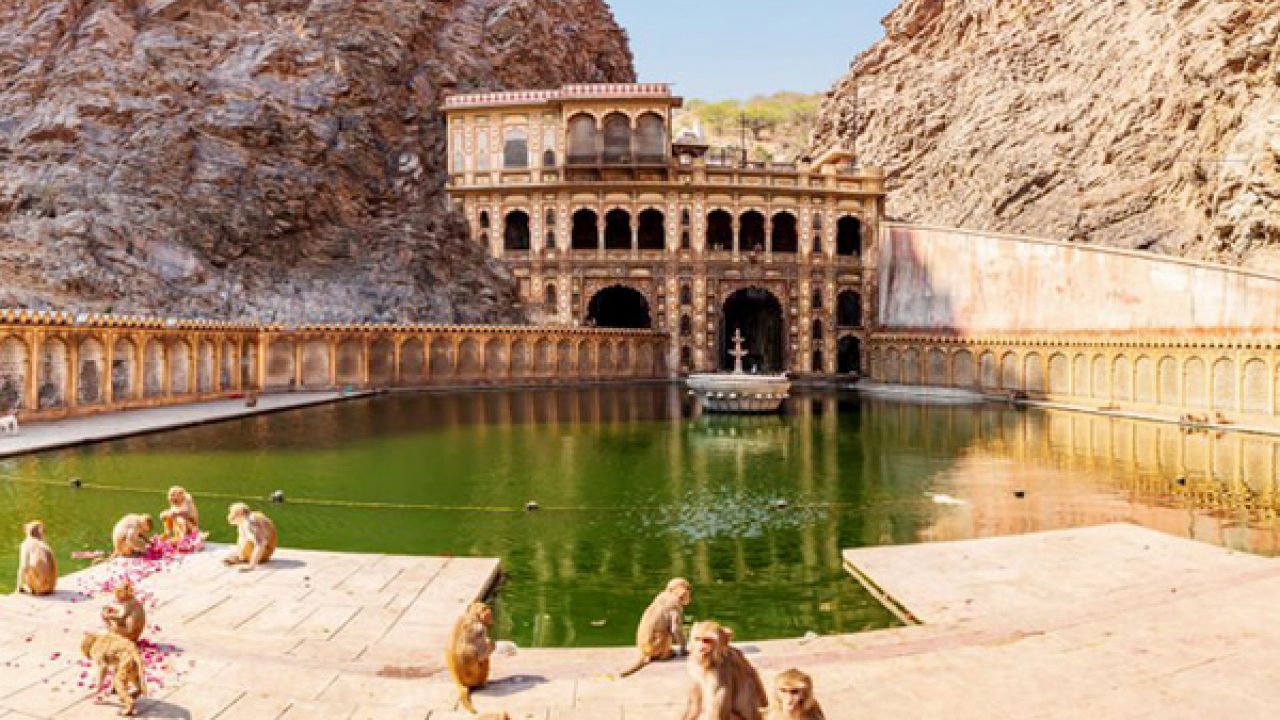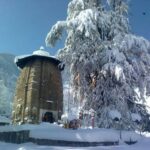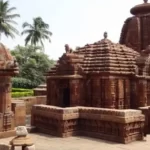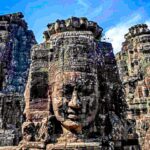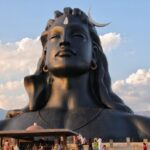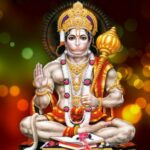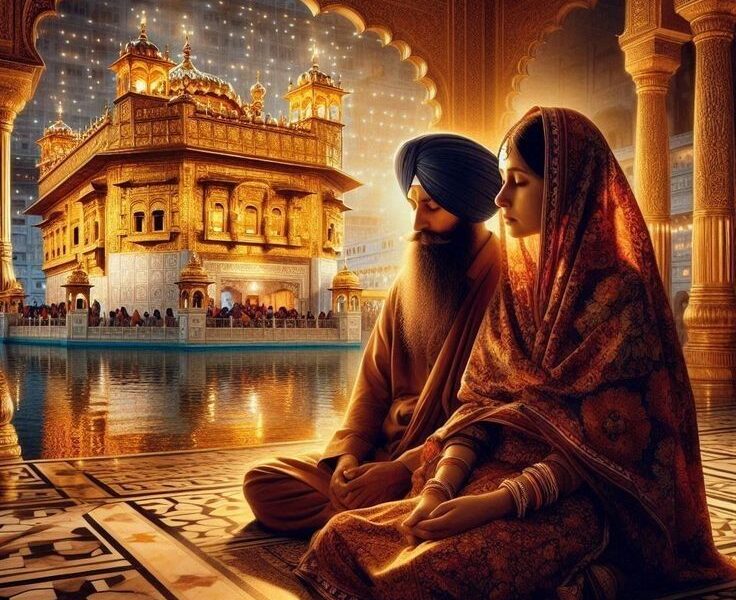Varanasi, Uttar Pradesh: Bharat Mata Temple
The Bharat Mata Temple in Varanasi, dedicated to Mother India, is one of the country’s most eccentric temples. The Mahatma Gandhi Kashi Vidyapeeth Campus shrine predates independence. It was created by independence warrior Babu Shiv Prasad Gupta in 1936 and dedicated by Mahatma Gandhi. The temple is a memorial to India’s heroic freedom fighters who battled, struggled, and gave their lives to free our country from British oppression. There are no idols of gods and goddesses at Bharat Mata Temple. Instead, it has a map of undivided India on the floor, depicting the independence fighters’ ideal.
Jalandhar, Punjab, Aeroplane Gurudwara
The Aeroplane Gurudwara, also known as Shaheed Baba Nihal Singh Ji Gurudwara, is unique in the country. Visa applicants visit this holy shrine. It is said that if you pray at this temple and offer a toy aeroplane, you will receive your visa quickly. Nobody knows who had the strange notion of donating planes to the shrine. However, there is a narrative behind this unusual local superstition. Many years ago, a group of youngsters who were waiting for their visas gave toy planes at the gurudwara and prayed for their yearning to travel abroad to be granted. And their wish came true! Since then, the temple has been dubbed Aeroplane Gurudwara or Hawai Jahaz.
Ujjain, Madhya Pradesh’s Kal Bhairav Nath Temple
The Kal Bhairav Nath Temple in Ujjain, located on the banks of the Shipra River, is one of the holiest places of worship for Lord Shiva’s followers. The temple is devoted to Lord Kal Bhairav, Lord Shiva’s furious form. He is also regarded as the protector or guardian of the city of Ujjain. This temple is remarkable in that booze is offered to the deity with other offerings. It is also said that Lord Kal Bhairav’s idol always drinks booze. The temple priest or pujari places the liquor-filled saucer near the lips of the idol, and the liquor begins to evaporate. It is still unknown where the liquor goes.
Kolkata, West Bengal’s Chinese Kali Temple
Chinese Kali Temple is a well-known shrine dedicated to Goddess Kali and is located in the Tangra or China Town region of Kolkata. When you visit the temple, it will look exactly like any other temple dedicated to Goddess Kali in India. The prasad that is served here distinguishes it from other temples. The temple serves Chinese meals to Goddess Kali, such as noodles, sticky rice, chop suey, and other similar items, which are then delivered as prasad to the devotees. Chinese Kali Temple, also known as Chinese Kali Bari, was built in 1998 from two granite stones that had been worshipped by villagers for over 60 years.
Kollam, Kerala’s Malanda Duryodhana Temple
Despite being the major adversary in the Mahabharata, King Duryodhana has a temple in Kerala’s Kollam region. The most remarkable element of this shrine is that it lacks a sanctum sanctorum and no king’s idol. Only a raised platform known as the Mandapam is available for worshippers to pray and meditate. If you’re wondering why a temple is devoted to a notorious ruler like Duryodhana, there’s a reason for that. According to legend, when the Pandavas were exiled, Duryodhana went in pursuit of them in the southern forests of Kerala. He arrived in Kollam district exceedingly thirsty and was handed water by an untouchable Kurava caste old lady.
Hyderabad, Telangana: Visa Balaji Temple
Visa Balaji Temple, or Chilkur Balaji Temple, is another uncommon temple in the country, located in the lovely village of Chilkur on the banks of Osman Sagar Lake. It houses the deity of Lord Balaji Venkateshwara and attracts worshippers from all across the country. A peculiar belief is associated with the shrine. According to locals, paying obeisance to Lord Balaji Venkateshwara here assists people in obtaining visas to the United States. They must, however, perform certain rituals for their wish to be granted. People who are waiting for visas must worship Lord Balaji and perform 11 parikramas, or rounds of the inner shrine.
Manali, Himachal Pradesh’s Hidimba Devi Temple
Hidimba Devi Temple is a well-known shrine dedicated to Hidimba Devi, Bheema’s wife and Ghatothkacha’s mother. The temple is recognized for its unique pagoda-style construction and is flanked by the lovely hills of Manali. Hidimba Devi Temple was built completely of wood by Maharaja Bahadur Singh in 1553. Three square roofs with various timber tiles cover the shrine, with a cone-shaped roof on top. This temple has no idols, only a rock in the sanctum sanctorum. Locals believe the rock is where Hidimba Devi sat for meditation.
Pali, Rajasthan, Om Banna, or Bullet Banna Temple
Rajasthan is a place of unique temples; the state is littered with some of the country’s most unusual temples, Bullet Banna Temple being one among them. Om Banna or Bullet Banna Temple in Rajasthan’s Pali district is a one-of-a-kind shrine dedicated to a Rajput Thakur named Om Singh Rathore and his 350cc Royal Enfield Bullet motorcycle. This strange temple has an intriguing backstory. According to residents, Om Singh Rathore was killed in an accident while riding his motorcycle. The cops brought his bike to the station, but it was gone the next day.
Kurnool, Andhra Pradesh’s Devaragattu Temple
Devaragattu Temple is one of India’s most peculiar temples, located in the Kurnool district of Andhra Pradesh. During the Banni festival procession on Dussehra, the temple, also known as Mala Malleswara Swamy Temple, performs a unique lathi rite. Many neighboring communities join in on this popular ritual by separating into groups. The priest performs Ganpati pooja, kankana Dharana (tying of holy threads around the bride and groom’s wrists), and nischitartham (engagement) of Lord Mala Malleswara Swamy with Goddess Parvati. A group of people then carries the presiding deities, while others carry long rods and flaming torches. They commence the ritual by dancing to the beats of the drums. and with a stick fight.
Deshnoke, Rajasthan’s Karni Mata Temple
Karni Mata Temple, often known as the Temple of Rats, is unquestionably one of a kind in India. Maharaja Ganga Singh of Bikaner created this marble palace with Mughal-style architecture in the twentieth century. The shrine is dedicated to Karni Mata, a 14th-century Hindu warrior saint who was an incarnation of Goddess Durga. The inner sanctum of the temple features a 75 cm tall idol of Karni Mata and her sisters. This temple is unique in that it is inhabited by around 25000 rats who freely roam the temple compound. White rats are revered in this temple, and it is thought that the white rats in the temple are incarnations of Karni Mata and her sons.
